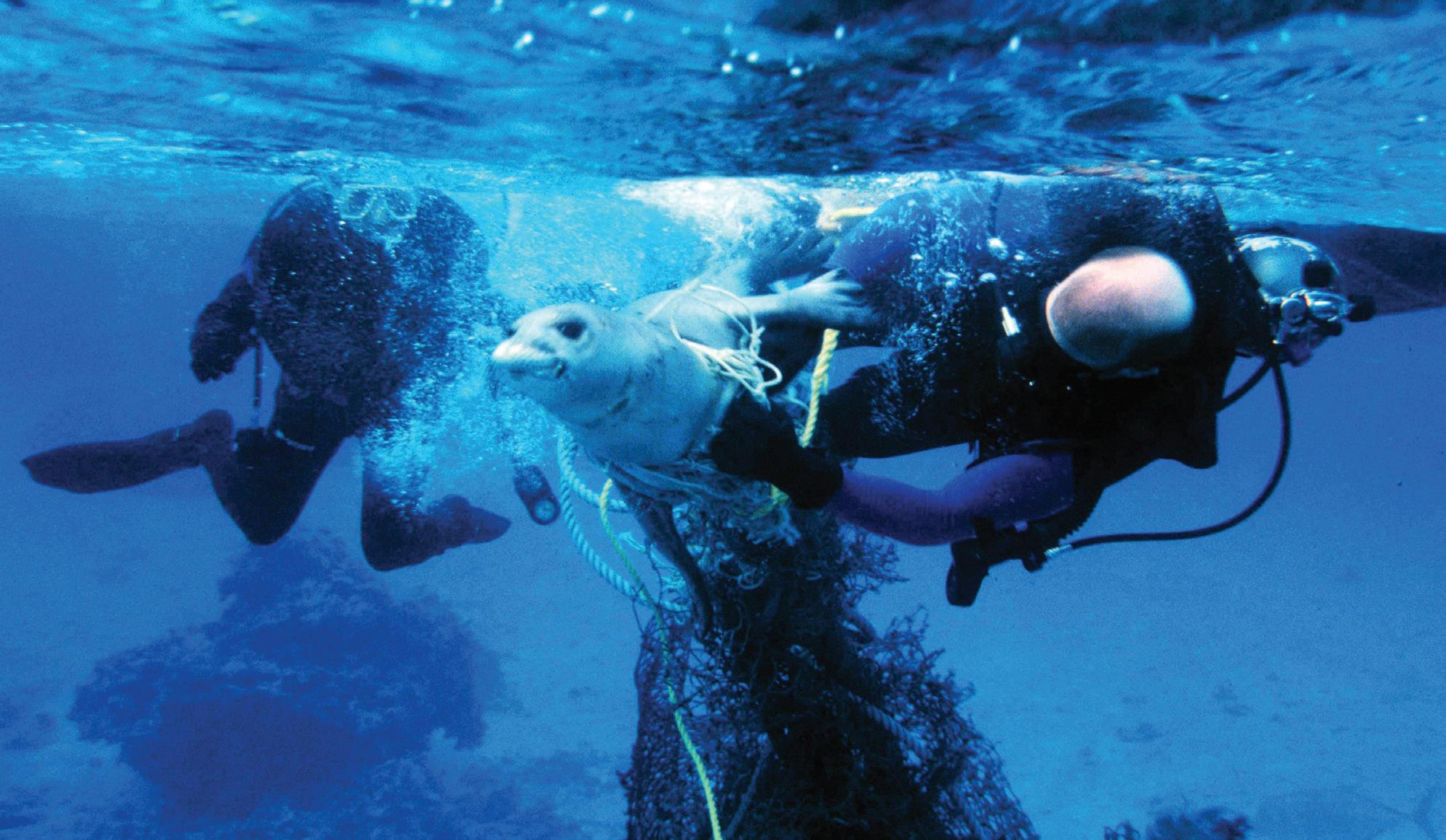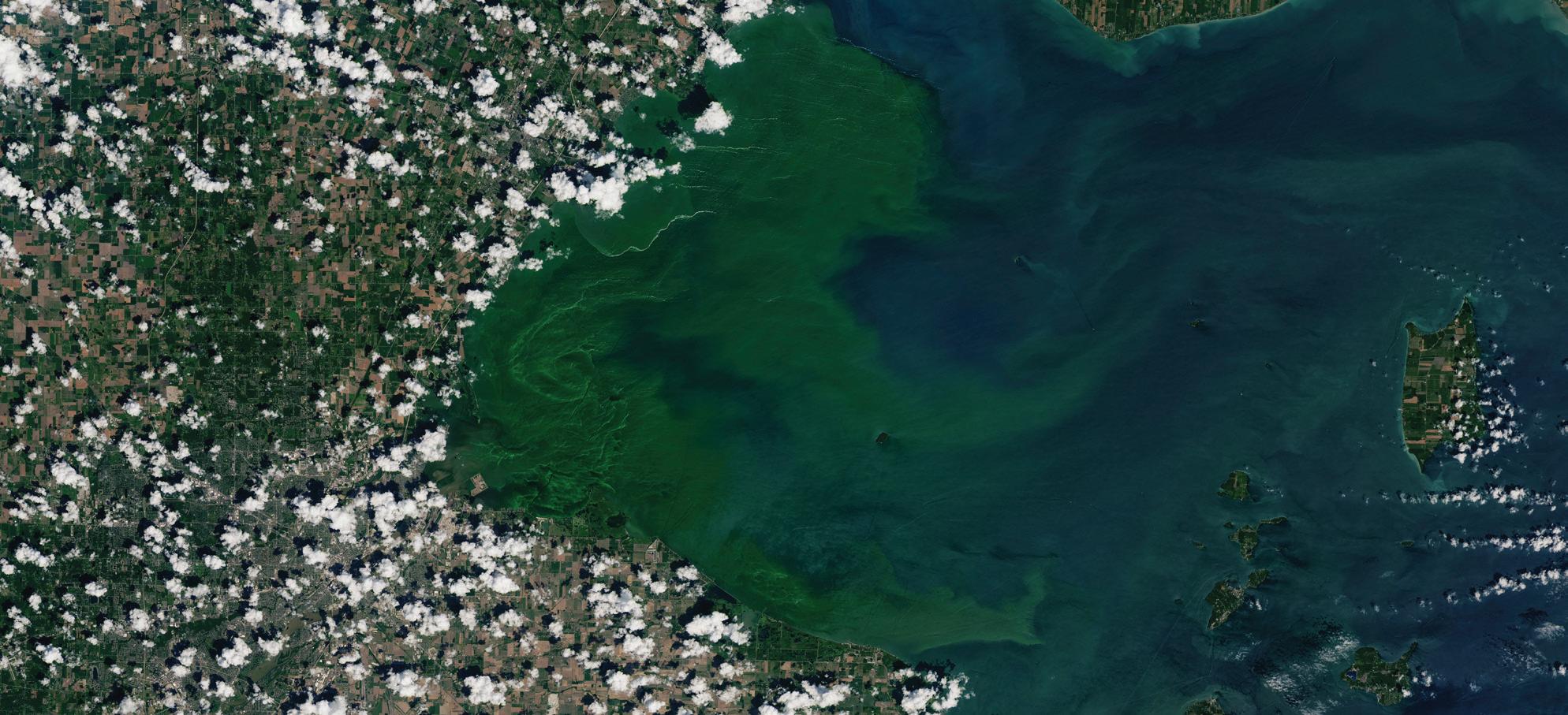NOAA TODAY
Saildrones in the Arctic In extreme circumstances, uncrewed systems help NOAA solve problems and fulfill its missions. By Craig Collins
1890 36
A saildrone rendezvous with the Coast Guard Cutter Healy (out of frame) in the Chukchi Sea in 2017.
same name in Alameda, California, to perform long-range data collection missions in the ocean environment. De Robertis and colleagues from NOAA’s Pacific Marine Environmental Laboratory (PMEL), Kongsberg Maritime, and Saildrone installed a newly developed low-power acoustic sensor to the saildrone’s keel, and validated that it could provide accurate estimates in the Bering Sea by comparing saildrone measurements to those of research vessels.
Acoustic surveys work by sending sonar signals into water and measuring differences in density – essentially sensing the gas-filled swim bladders of fish. In another ocean environment, De Robertis explained, this method alone would not enable scientists to differentiate individual species – but in the Arctic, where species diversity is relatively low, that’s less of a problem. For 40 years, NOAA Fisheries scientists have been sampling midwater fishes via
Cooperative Weather Observer Network established, a system that now has more than 11,000 observers nationwide.
U.S. COAST GUARD PHOTO BY PETTY OFFICER 3RD CLASS AMANDA NORCROSS
T
he writing had been on the wall for weeks, but it became official in May of 2020: Given the dangers and uncertainties posed by the global COVID-19 pandemic, NOAA Fisheries would have to cancel five of six planned research surveys in Alaska waters. In a typical year, NOAA survey vessels collect detailed information about fish stocks through a combination of acoustic and trawl surveys: identifying schools of fish in the water column with sonar, and studying the biology and growth of fish scooped up in nets. These surveys are key data sources for managing critical fish stocks and establishing fishing quotas for species – including the Alaska pollock, the world’s largest sustainable fishery, accounting for about 5 percent of the entire global fish catch and valued at more than a billion dollars a year. NOAA’s reluctance to send dozens of crew members into the Bering Sea for a ship-based survey was understandable, given the risks, and Alex De Robertis, a fisheries biologist at NOAA’s Alaska Fisheries Science Center, developed a contingency plan for gathering at least some useful data on Alaska pollock. For several years he’d been experimenting with an uncrewed surface vehicle, the Saildrone, built by a company of the









































